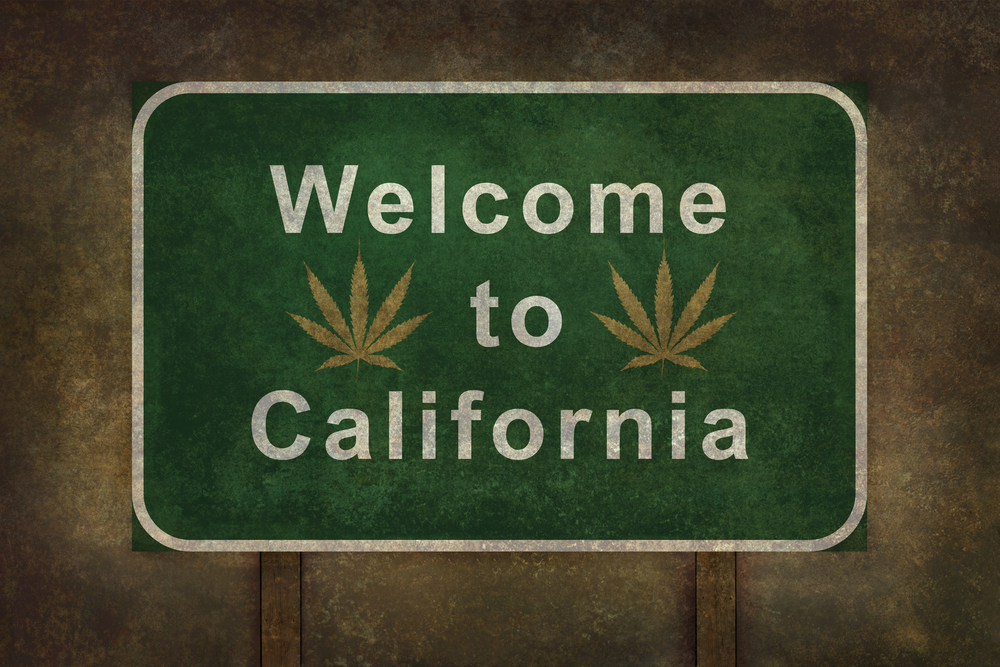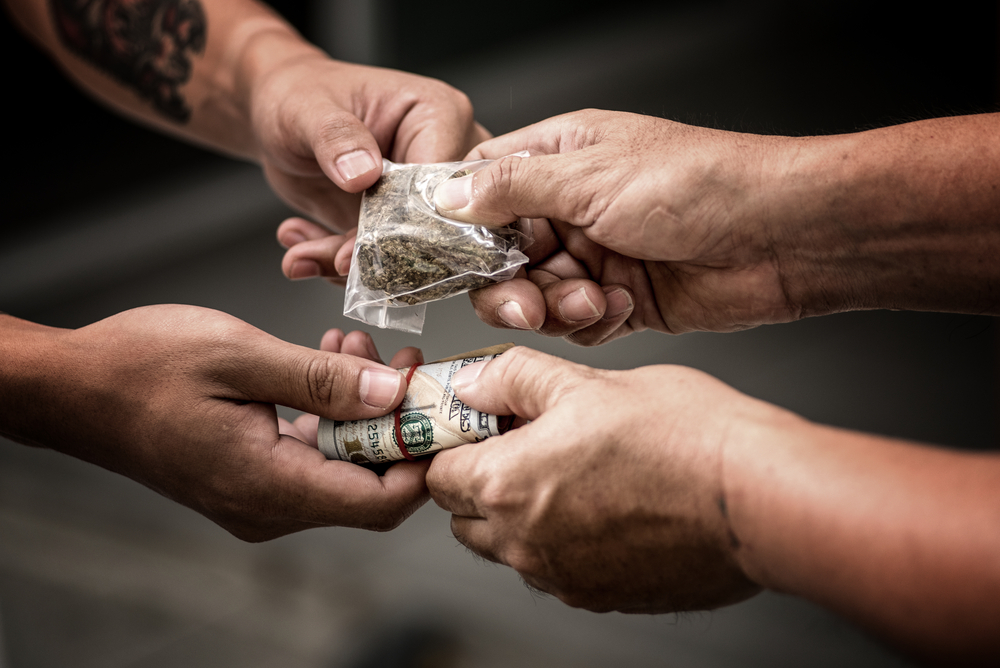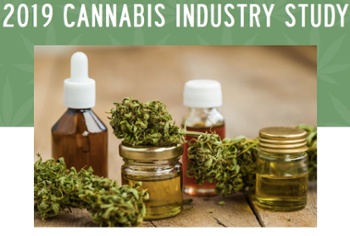It seems the legal cannabis industry is kinda going to pot. National recreational sales have disappointed across the country, especially in expected boomtowns like Illinois and California. Headlines seemingly emerge everyday to document the calamity: “Marijuana stocks have lost (at least) $35 billion in market value since October” or “These 2 States Are Sabotaging Their Respective Marijuana Industries,” for example.
It wasn’t supposed to be this way; California in particular was supposed to lead the way towards national legalization, proving an ideal test case for just how quickly a legal market can expand into profitability and tax revenue.
Obviously things have not gone as well in California as analysts (yes, including us) assumed it would. Yet despite these market setbacks, cannabis remains just as popular as ever--this is not an issue of deteriorating demand but rather one of markets failing to meet that demand for reasons having to do with legal regulation, taxation, and the omnipresent black market.
So we are packing up a big fat bowl of cannabis industry market research to take a closer look at the first two years of California recreational legalization, its promises and pitfalls as we investigate the disconnect between demand and sales before inquiring what in the heck can be done about the black market. Puff, puff, pass.
When It Comes To Cannabis, California Should be like the Nation’s Respiratory System...
Ok, first thing’s first: California, as both a market place and a test case, is monumentally important to recreational cannabis’s long term national success. This isn’t just our Cali-centric biases, make no mistake about it, California is essential. It has long been expected the state would generate nearly 25% of national cannabis sales moving forward, owing to its sheer size, its stoner-friendly culture, and its position as a national trendsetter.

Honestly, if not California--home to Snoop Dogg, Dr. Greenthumb, and Oaksterdam University--well, where?
Everybody was looking to California, to the ways it would would organize, regulate, and tax its recreational cannabis economy. And yet, it would seem so far in California, there’s been a lot of smoke but not a whole lot of fire.
...But it is Just Choking
Much of the disappointment has to do with tax revenue. When California legalized recreational cannabis by passing Proposition 64 in 2016, its supporters speculated that it would generate $643 million in tax revenue in its first year of legalization, and $1 billion by 2020. For many a non-user, this revenue was a compelling reason to support legalization--even if they do not partake, the state and city will generate income to benefit the polity.
Yet these figures have proven an overestimation to say the least; in its first year of recreational legalization, California generated $345 million. This year is on track for about $355 million. Maybe in some industries a $10 million increase is good; in this case it is paltry and nowhere near good enough, especially when falling so short of election-time forecasts.
And then there are actual sales. One would assume that year-over-year sales would maintain a steady upward trajectory as current cannabis consumers migrated their purchases to legal channels, and new users emerged in the relative safety of a regulated market. Yet even a simple year-over-year increase has proven tough for the state to achieve.
Indeed, there is evidence that the legal marijuana market actually shrunk by $500 million between 2017 and 2018 as the state went from medically legal to recreationally, moving the wrong direction if it wants to hit the $11 billion in yearly sales that Prop 64 proponents and early pot-ocrats promised by 2030.
Weed, Kanye, and Jesus
It’s important to remember that these are symptoms of poor regulation and planning, not some early sign that cannabis is losing its appeal. The public’s appetite for cannabis has not in any way diminished, it’s just that people have not migrated to legal purchase channels as quickly or regularly as forecasted.

Let’s not confuse a market that is growing up for one that is drying out--consumers still want cannabis products in a big, big way. How big? Well, try this: recent data from cannabisMD shows that, in terms of search volume, CBD was more popular than Jesus, Kanye West, Taylor Swift, the NBA, and the Beatles. In fact, the only two things more searched were Halloween and PornHub.
Back to Black Market
And selling drugs to people who want to buy them should be the easiest sale to close in the world. Yet it has not gone this way as Californians have remained steadfastly loyal to the black market.
Consider that, according to a recent report by the Los Angeles Times, 2,835 unlicensed dispensaries and delivery services operate in the state, dwarfing its 873 legal operations. By the end of year, Californians will have spent roughly $8.7 billion in the illicit cannabis market compared to $3.1 billion in legal channels.
Why have Californians shunned the relative safety and superior selection/quality of legal recreational dispensaries? Some of it comes down to comfort--people who came of age buying dime bags from a friend of a friend see no need to rock the boat. But even more than routine, we have to talk about money, specifically taxes.

In order to deliver on all that promised cannabis tax revenue, cannabis products legally sold in California are subject to state and local sales tax, excise tax, and a wholesale tax, meaning that purchases come with an aggregate tax rate of 45%. That’s a nearly prohibitive tax rate, one that keeps many potential customers in the tax-free black market. Prices are generally higher in dispensaries even before the taxes kick in due to laboratory and regulation costs already built into the price.
There is talk of walking back some of these taxes, reducing others, but even if these proposals move through legislation, the fact of any tax, much less one still hovering around 40%, makes it difficult for legal cannabis to compete with the tax free wild wild west of the black market.
MedMen Going Mad
Thus, unable to compete on price, legal operations in California have been trying to win on convenience and class with rapid delivery, and elevated in-store experiences and expertise.
But for operators like MedMen, this has proven too costly and is still not enough to siphon traffic away from the gray and black market. MedMen operates 12 legal dispensaries in California, with operations also in Arizona, Florida, Illinois, and New York. And they have been feeling the burn, particularly in California. They’ve lost 80% of their valuation off their books over the last year, with net losses hitting $82.9 million in the fourth quarter, more than double the losses over the same period last year.
Yeah, most of this has to do with the aforementioned regulation troubles, but some of it is self inflicted. For starters there have been some accusations (from the company’s former CEO no less!) of reckless spending, and whether entirely accurate, the company did recently burn through $186 million in operation budget in a recent nine month period. A lot of this money is going towards crafting an elevated in-store experience that can contrast the parking lot nature of typical black market sales, some of it to acquiring market share and expanding into new markets, and some of it is just disappearing.

Regardless, it is easy to forget that, not all that long ago, operations like MedMen were the hottest stocks around. And while the mighty certainly have fallen and continue to fall, there are still indications that the relative safety of legal cannabis may ultimately be enough of a differentiator all on its own, particularly when it comes to quality control.
The CDC has recently revealed that the recent panic regarding toxic cannabis vapor cartridges is restricted to the black market--regulated vapor cartridges sold legally in dispensaries are not a risk. WIth people dying of lung complications across the country, you would think that vapor enthusiasts would be flocking to the bosom supply chain control and lab testing regulation.
Then there is the Napster/Spotify phenomenon--when offered the opportunity to pay a small premium for the safety of an above-the-board transaction, consumers ultimately tend to take it. But that premium must be reasonable, and a 45% tax rate is not a reasonable premium when compared to a 0% tax in the black market.
Cannabis Industry Market Research: The California Hurdle
On a national level, the game remains the same: acquiring brands with existing licenses in multiple states and rushing to build the first truly national pot empire. But instead of being the launching pad many expected, California has proven the first true hurdle for this expansion.
With California’s legalization giving localities the right to prohibit recreational sales in their jurisdiction, and many of the state’s smaller cities and counties (80%) have done just that. This means that there are only roughly three dispensaries per 100,000 state residents.
Sure, limited competition is a boon in many industries--McDonalds would love to be the only joint selling burgers. But in a developing industry that must train consumers to expect the safety, comfort, and convenience of legal operations they must be a regular presence in people’s lives. Otherwise they have no hope in communicating their value proposition to consumers. And that is music to the black market’s ears.


